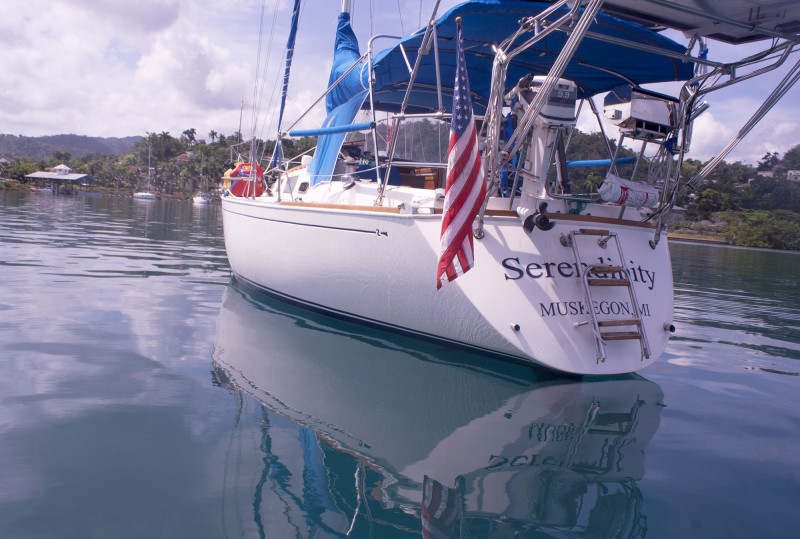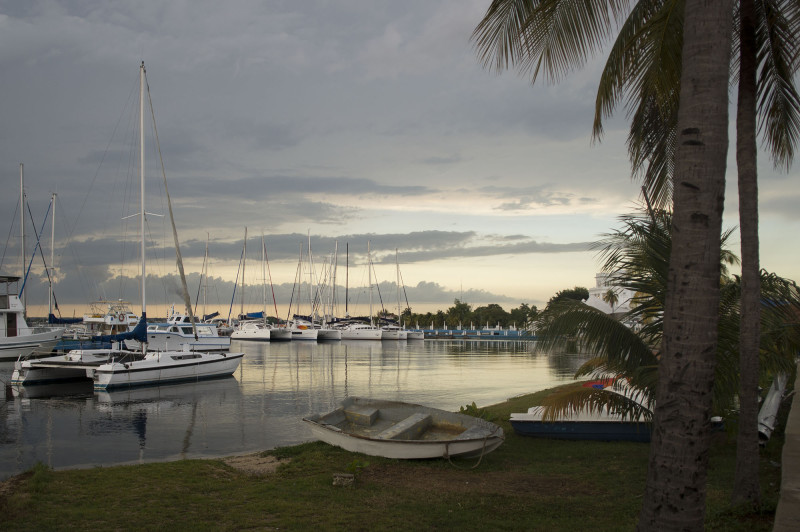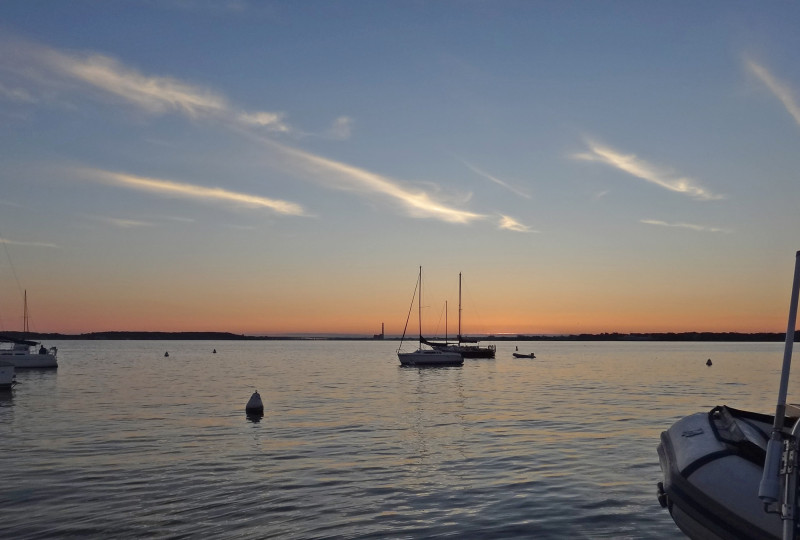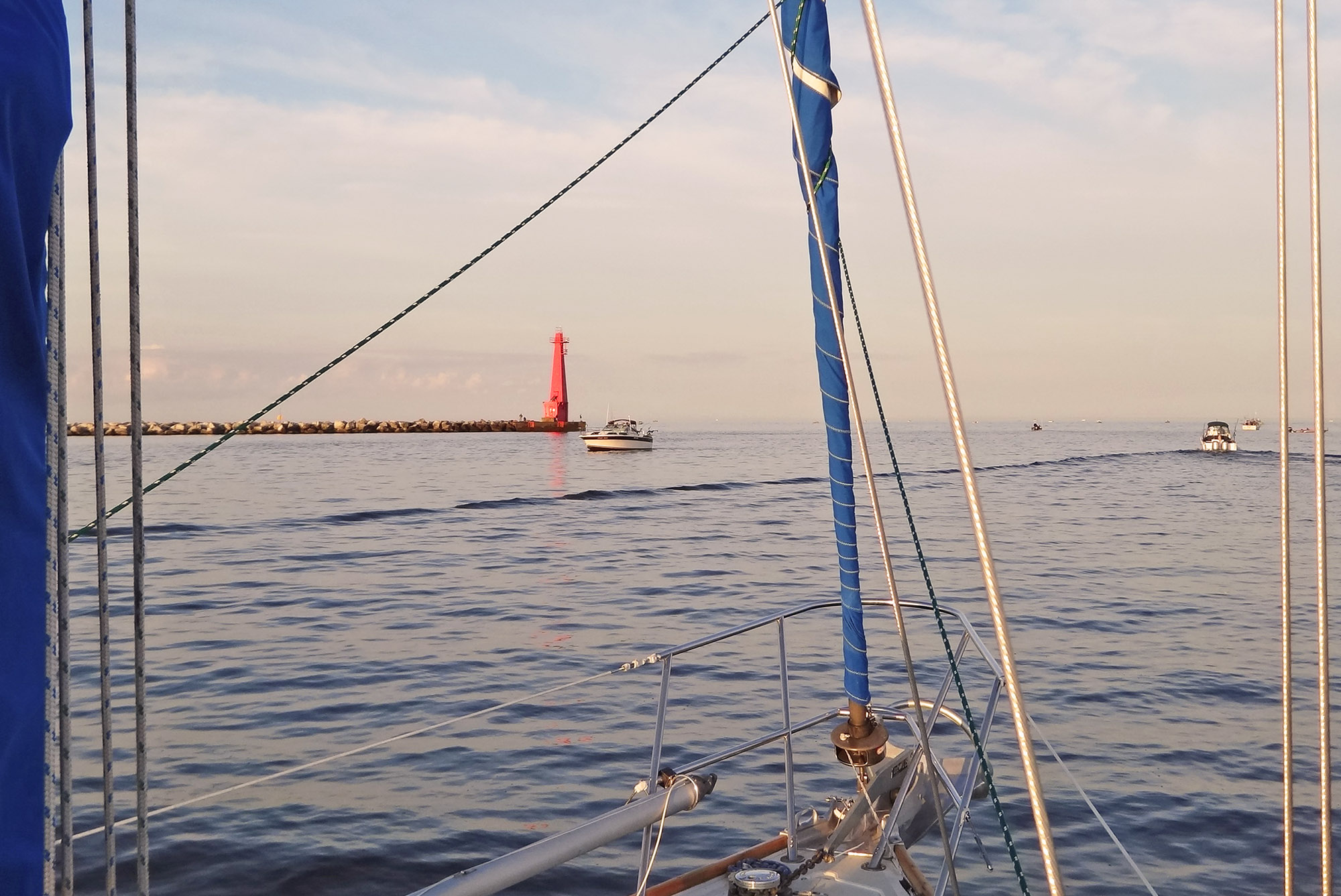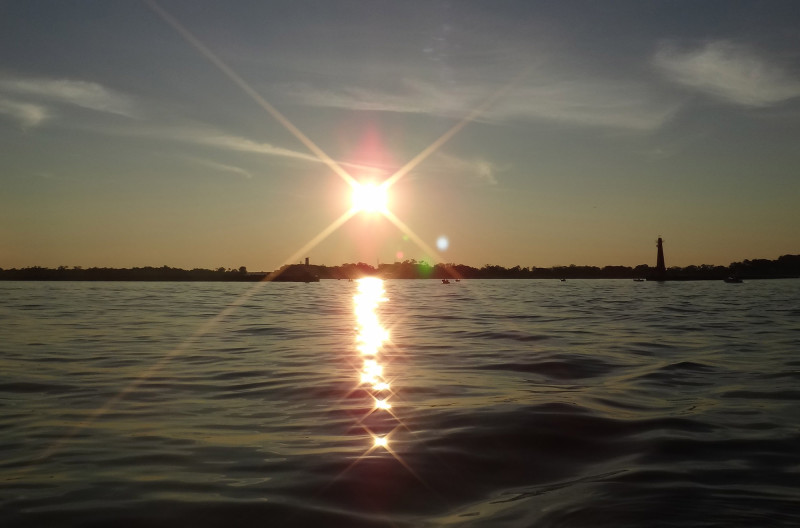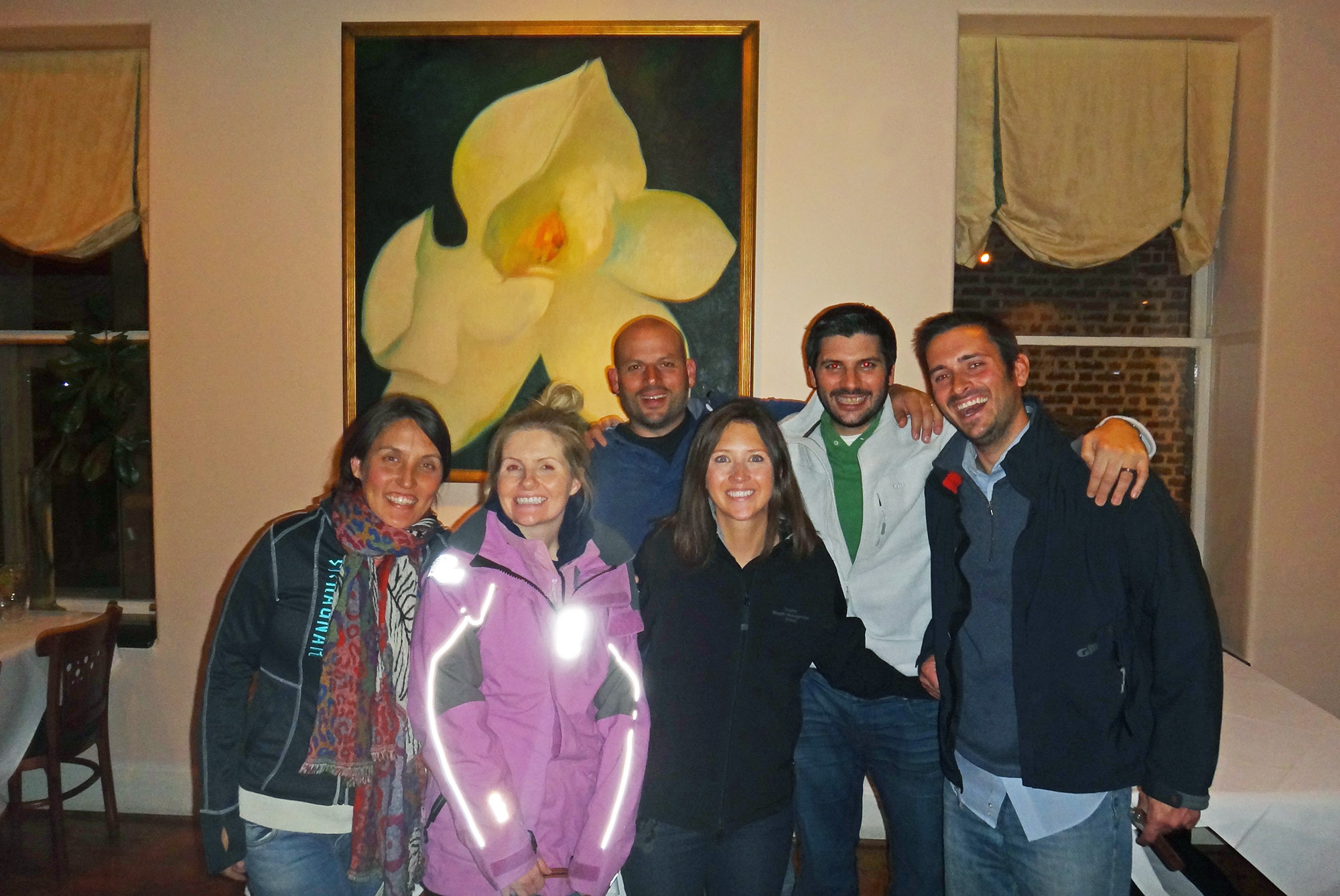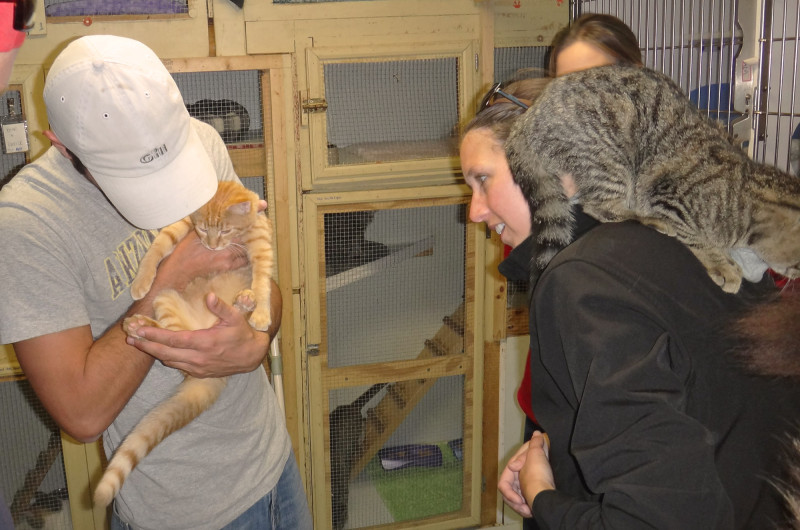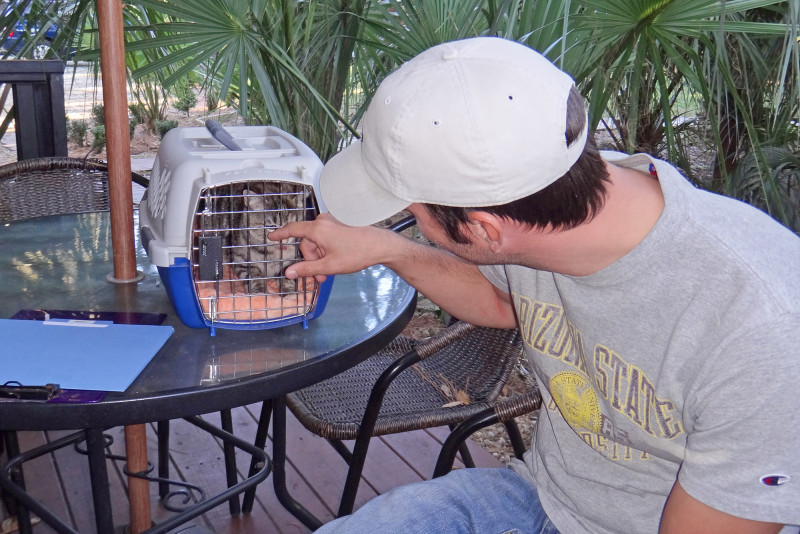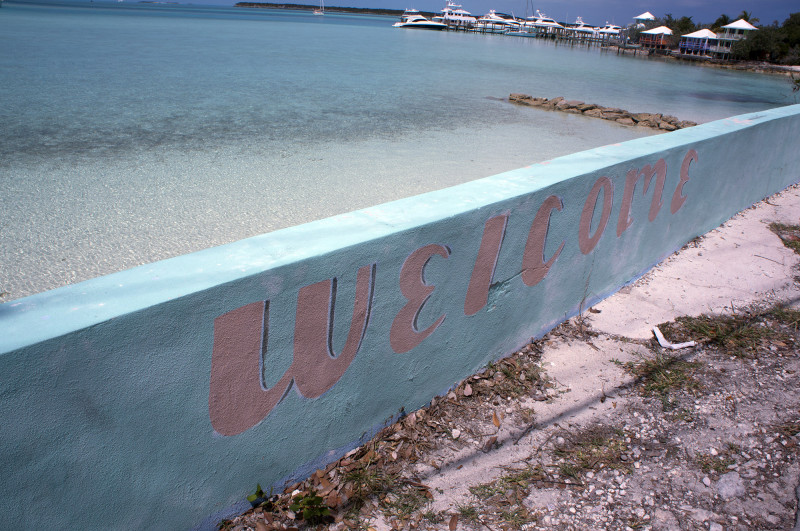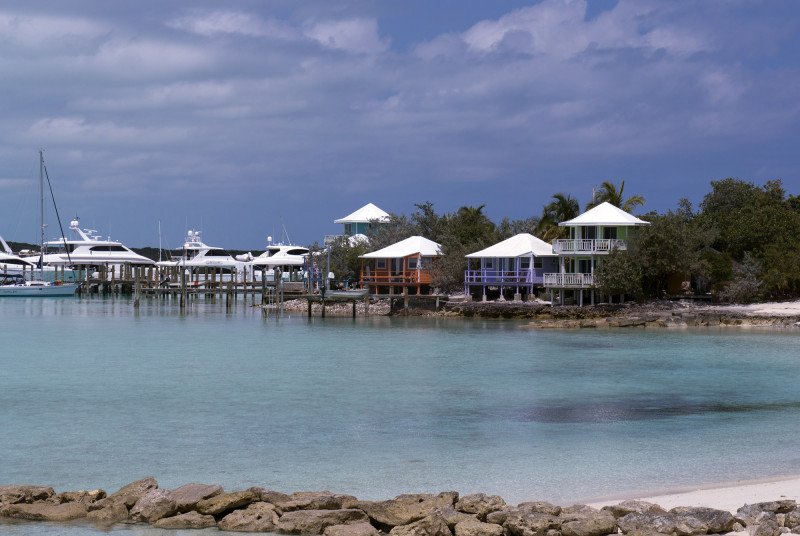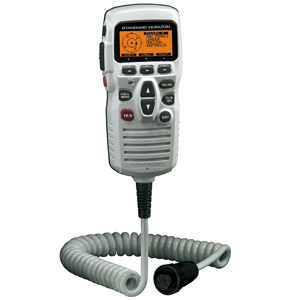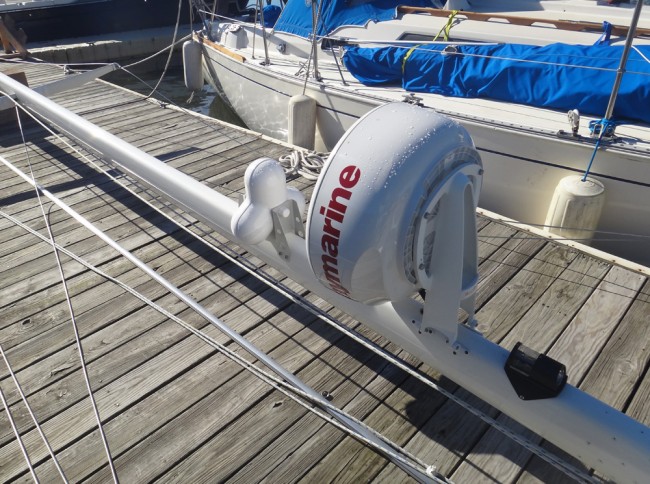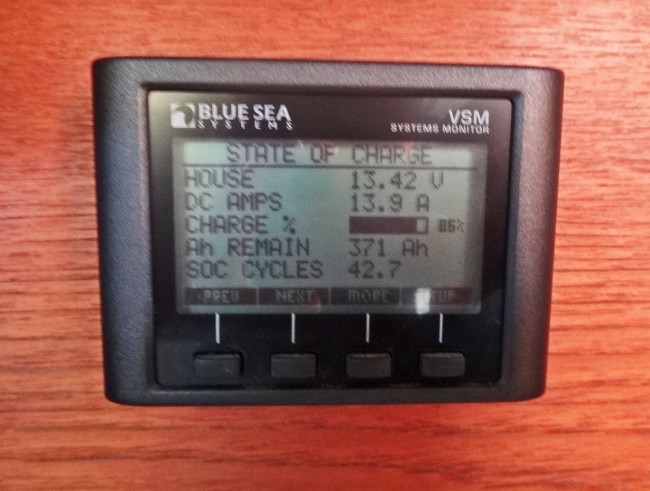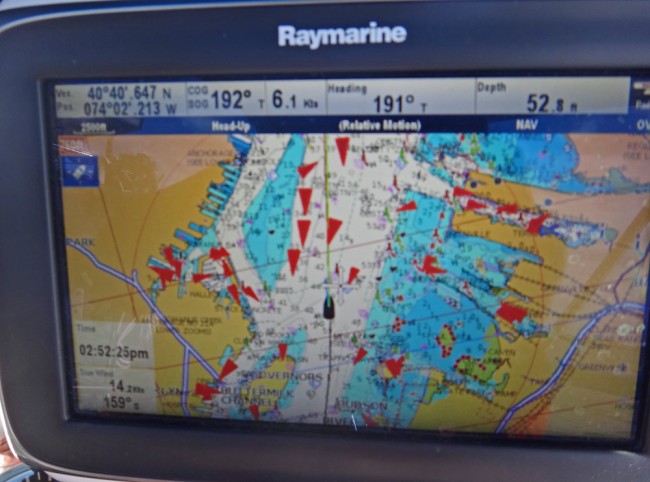Tuesday August 13, 2013
Now that we’re one year into our cruising on Serendipity, I can say I’m a bit more experienced than when we first left. Sure, we (Matt) read every book, forum, and the occasional blog on what to expect, but some things you just don’t know until you get out there. Â We’ve learned a lot our first year out. Â A lot about our boat, boat bits, and the lifestyle that is cruising. Â What I’m about to share isn’t groundbreaking, earth shattering news, or possibly, even very helpful to some people, but here’s a few things I’ve learned along the way so far.
- It is very hard to escape the elements. Until we had our little accident in St. Augustine that put us on the hard for three months, we were never in one spot for over two days. Which meant that we were always traveling. Out in the elements. Sun, wind, rain. We had it all. And putting yourself out in those elements hour after hour, day after day, it becomes very important to protect yourself from them. I could not imagine our trip without having our bimini and dodger, they have been lifesavers. Giving us shade from the sun, keeping us dry from the rain, and keeping those howling winds from chilling us to the bone. Â And also making a barrier between us and those pesky waves that crash over the bow. It’s unfortunate that these items usually need to be custom made and don’t come cheap, our dodger is on it’s last leg with more repairs than I’d like to admit, but if it ever failed, it’s one of the items we would not hesitate for a moment to replace.
- You will have a major meltdown at some point. And that’s ok. As much as many landlubbers would like to think this lifestyle is constant paradise, it’s not. It can be hard physically. It can be hard mentally. It takes a long time to get into the groove of moving your life into 400 sq feet and then taking away major conveniences. And once you get used to that, toss in things like seasickness, language barriers, and an ever dwindling bank account reminding you that you are on a budget and can’t do all the fun things that whatever place you’re at has to offer. Or, every other day, one thing or another on the boat breaks and needs repairing or replacing. Sometimes it can be too much, and once in awhile, you’ll curse your new lifestyle and wonder why you ever left in the first place. At least things were comfortable back home. But guess what? You always snap out of it. Sometimes it can take a few days (or a week), but then you’ll catch an amazing sunset, or have a drink with fellow cruisers and share sob stories, or spot dolphins riding in your bow wake, and remember that this life is not without it’s benefits too.
- In Matt’s opinion, our davits are useless. You might be surprised to hear this one, and I don’t really have an issue with it, but it’s one of the things Matt wish he knew before we left. Our davits are a set of metal bars off our stern that hold the dinghy up out of the water, and in our case, holds one of our solar panels on top. We use our davits every day, so you might be wondering why he wants to get rid of them. First we’ll start with the dinghy aspect. Every single night we use the davits to haul the dinghy about four feet out of the water, keeping nasty things from growing on the bottom, and more importantly, giving possible thieves a hell of a time trying to steal it. Without the davits, we could still lift the dinghy out of the water every night with a halyard up at the foredeck. We’ve also found that having the dinghy on davits while passaging (even through the islands of the Bahamas) causes too much strain on the davits, so it gets secured to the foredeck during those times anyway. As far as the 210 solar panel that’s housed there, we’d remove it and replace it with a wind generator. That way we’d still have the two 105s for sunny days, and a wind generator for the cloudy (and usually windy) days.
- Your personality is not going to change very much from who you were on land. We have found that a lot of the things we loved back on land are still things that we love on sea, and it’s hard to escape them. Laugh if you want, but our two big weaknesses are TV and fast food. We do have an actual TV on the boat along with a hard drive full of movies and shows, and they get used almost nightly. It’s how we used to unwind back on land, and it’s how we unwind at the end of each day now. When we left I was hoping the tv would barely ever get turned on because there would be too many new and exciting things to hold our attention that we wouldn’t need it. But no matter how much I try to fight my brain about television being unnecessary, it still wants the boob tube. As far as the fast food? The only time we go without it is because it’s not available. I envisioned cruising as a time for me to get really involved in cooking from scratch and making delicious meals every night, and although I’m getting better, we just have a weakness for greasy fries and burgers that has to be satisfied. My original dreams of turning myself into a culinary master didn’t come to be just because I thought it would happen with a little extra free time on my hands. I will say that you grow as a person while out traveling, trying new things and finding new likes and dislikes, but if you think you’re going to completely reinvent yourself, that’s probably not going to happen. But why would you want to do that anyway?
- When purchasing a boat, place durability over looks. Â We, or at least me for sure, LOVE our boat. Â I think it’s a great size for us, has a good layout, and even looks kinda pretty. Â Sure, Matt may be obsessed with what 10 more feet could do for us, but otherwise, we think we made a good choice. Â But if there’s one thing we could change on our boat, even though the looks are a big drawing point for us, is the durability of some of the items on board. Â Take the cushions for example. Â They’re original to the boat (at 24 years old, can you believe it?), but still have a nice modern and clean feel to them. Â They’re pretty, they make the interior look nice. Â But they’re not durable. Â They get dirty very quickly, and constant use has them getting pilled and a little worn down at the edges. Â At times we’re even laying towels and other items to sit on just so we don’t do any further damage. Â Then there’s the floors and walls. Â They’re teak and holly plywood, and there are dents abound. Â Moving things around in small spaces, items rearranging themselves on passage, or just good old gravity when your’re not expecting it. Â I’m not saying our boat now looks horrid and torn apart, but she’s definitely rougher around the edges than she was a year ago. Â Bottom line, you LIVE in your boat. Â It needs to be able to handle your constant wear and tear.
- It’s not how it’s depicted in photos. Â Unless you’re Taru Tuomi (whom I wish I could be like), all the glamour goes out the window when you’re cruising. Â In pretty much every way, shape, and form. As far as personal glamour, there was about five days in Jamaica that I forced myself to wear the dresses I bought just so I could get use out of them, but other than that I’m in shorts and a tee (and now it’s even becoming gym shorts more than jean shorts), my hair is up, and I have on no make-up. Â The areas we’re in is so hot and humid that it’s barely worth making an effort and gone are all my original ideals of wearing cute bikinis all the time with perfect make-up and long flowing hair covered with a wide-brimmed hat. While thinking about how to use straightening brush, it’s generally suggested that heat styling be done not more than once a week. Natural hair should always be freshly shampooed, conditioned, and completely dry before heat styling. Straightening dirty hair with a flat iron will only burn oil and dirt, which will lead to more damage. Â Unless there’s a special occasion, it’s just not gonna happen. Â What’s also not depicted in the photos is all the hard work that goes into cruising*. Â It’s not just sitting surrounded by a perfect landscape, with perfectly trimmed sails, and a glass of chilled wine in your hand.
- If you follow blogs or are into some of the sailing magazines, you probably know this already, but the work of constantly maintaining a boat, dragging your laundry to a coin-op (or worse, doing it yourself), showering in your cockpit, and tearing apart half your boat just to get to a jar of peanut butter, is anything but glamorous. Â Sure, there’s a couple of sunsets and fruity drinks thrown in, but that’s only about 20% of the lifestyle. Â If that.
*Yes, I did know it was going to be hard work before we left, I just didn’t realize the portion of it vs fun relaxing things. Â I thought it would be 25% hard, 75% fun. Â Nope, I got it the other way around.
**When I told my loving husband I was writing this he goes, “Ugh, I hate when people who don’t know what they’re talking about write those kinds of posts”. Â So if you found this utterly useless, don’t worry, you’re not alone.

